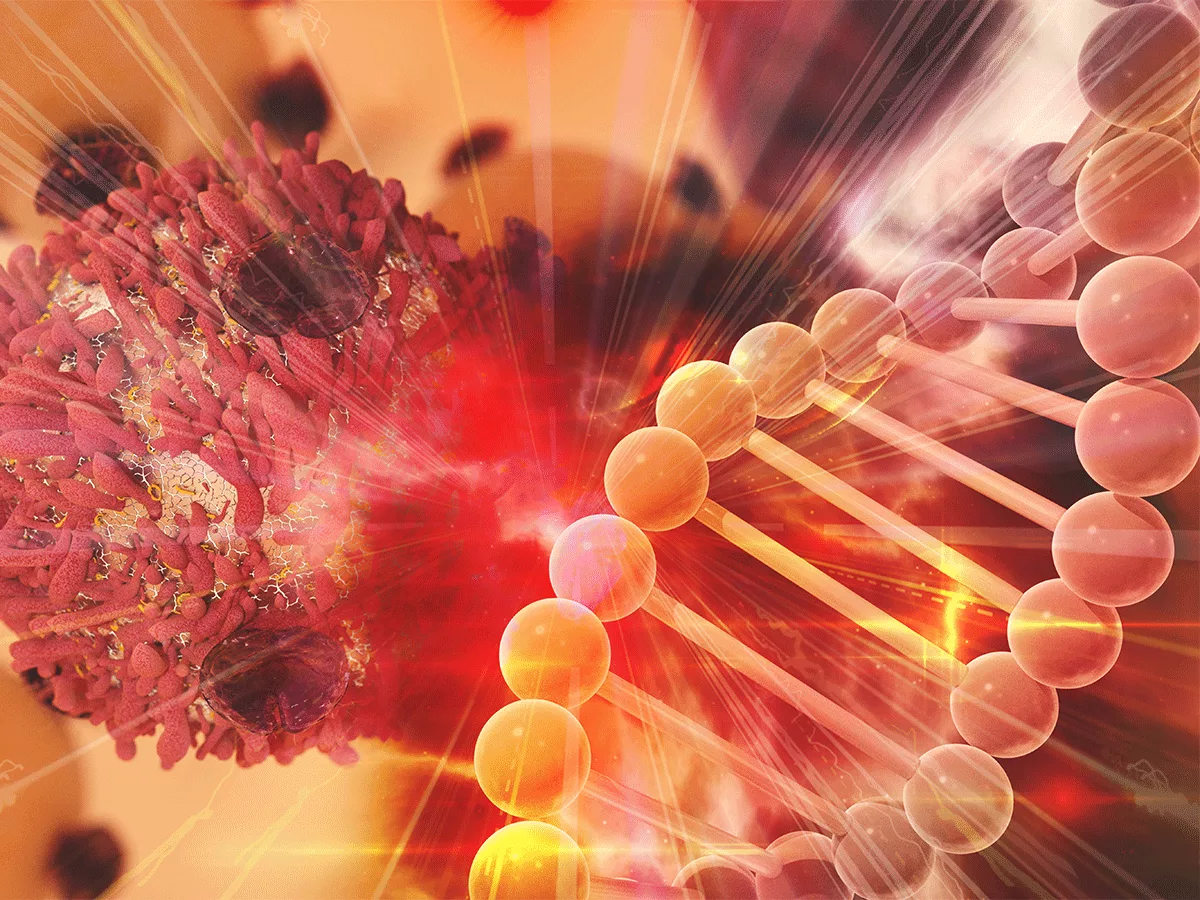Investigators led by Russell Pieper at University of California, San Francisco (UCSF) have discovered that ALT-associated tumors are hypersensitive to a subgroup of poly [ADP-ribose] polymerase (PARP) inhibitors. The team reported its results in the May 5, 2021, online issue of Science Translational Medicine.
Telomeres, repetitive DNA-protein complexes at the ends of chromosomes, are crucial for the survival of cancer cells and are maintained by an enzyme called telomerase in the vast majority of tumors. Telomere shortening during successive cell divisions is a molecular clock for cells, but can also induce chromosomal instability and tumorigenesis.
Dysfunctional telomeres, arising by critical shortening of telomeres in normal somatic cells during progressive cell divisions, elicit DNA damage responses that trigger cellular senescence. Cells that gain oncogenic changes bypass senescence and continue to divide until multiple critically shortened telomeres initiate breakage-fusion-bridge cycles in which two sister chromatids lacking telomeres fuse together, leading to cell death.
Cancer cells achieve unfettered proliferation by activating or upregulating the normally silent human TERT gene that encodes telomerase. Rarely, another DNA recombination mechanism termed alternative lengthening of telomeres (ALT) reverses telomere attrition in order to bypass senescence. This is seen in 10% of all tumors, including most lower-grade astrocytomas.
Speaking to BioWorld Science, senior author Russell Pieper said, "these tumors cannot reactivate the telomerase gene and therefore use the recombination-based ALT mechanism to stabilize their telomeres. What is interesting is that this phenomenon is not restricted to gliomas and other brain tumors; 5-10% of all tumors sporadically use the ALT mechanism to evade the lethal telomeric fusion events."
Pieper is the director of basic science in the UCSF Brain Tumor Center and the vice chair of the UCSF department of neurological surgery.
"Our previous studies suggested that cells using the ALT mechanism were suppressing DNA repair at telomeric ends and instead allowing copying and annealing to go on," Pieper said. "Since the ALT mechanism is not used by normal cells and is critical for the survival of ALT-dependent tumor cells, we hypothesized that effective targeting of the ALT process may allow new therapeutic options for ALT-associated cancers."
Pieper and his team observed that ALT-dependent cells demonstrated an enhanced sensitivity to a select group of PARP inhibitors. PARP inhibitors occupy the catalytic site of the DNA damage sensor PARP1 and inhibit the synthesis of poly [ADP-ribose] chains that serve as a platform for the recruitment of DNA repair proteins.
PARP inhibitors also stimulate the error-prone repair of DNA double-strand breaks by nonhomologous end joining (NHEJ).
In ALT-dependent cells, genetic activation of otherwise repressed NHEJ repair pathways drive lethal telomeric fusion. Pieper said that "interestingly, this selective toxicity was independent of the ability of these agents to trap PARP or cause drug-induced DNA damage. Rather, we noted that the ALT-dependent toxicity of select PARP inhibitors was associated with a dose-dependent fusion of chromosomes at their telomeres."
This PARP inhibitor-induced telomeric fusion in ALT-dependent cells was shown to be driven by activation of NHEJ. Further, in ALT-dependent tumor cells, the selective PARP inhibitor toxicity was associated with telomeric fusion that was reversible by suppression of the ALT phenotype.
PARP inhibitors that were selectively toxic to ALT-dependent cells interrupted the binding of PARP1 to the double-strand break repair protein MRE-11.
"The PARP1-MRE11 interaction in the telomeres of ALT-dependent cells was limited by some, but not all, PARP inhibitors. Those PARP inhibitors which prevented the PARP-MRE11 interaction induced conformational changes in the BRCT (BRCA1 C-terminal) of PARP", Pieper noted.
"These conformational changes in the BRCT domain, especially in telomeric context, have not been extensively examined. The data here suggested that the activity of select PARP inhibitors in ALT-dependent cells indicates the potential of these drugs to act as indirect PARP1 protein-protein interaction inhibitors (PARP-PPIi); this was confirmed by the fact that the PARP-PPIi, gossypol, caused similar ALT-dependent telomeric fusion", said Pieper.
In order to highlight the therapeutic potential of these PARP inhibitors, the efficacy of these PARP inhibitors was tested in vivo in ALT-dependent patient-derived xeonograft (PDX) models. Mice were intracranially injected with cells derived from human ALT-dependent or ALT-independent astrocytomas.
Upon tumor establishment, the animals were dosed daily with vehicle or the blood-brain barrier (BBB)-penetrating PARP inhibitor niraparib. Niraparib exposure selectively slowed tumor growth, caused tumor regression, and prolonged the survival of all the ALT-dependent tumor-bearing animals.
Pieper proposes that ALT-dependent tumors represent an ideal subset of cancers in which to use select PARP inhibitors. According to him, "Our work shows that chromosomal fusion, rather than PARP activity or overall DNA damage, correlates with PARP inhibitors lethality in these cells. Additionally, the clinical availability of the effective PARP inhibitors identified here coupled with the ability of some of these agents, such as niraparib, to cross the BBB, make these a viable therapeutic option in the treatment of these tumors."
Pieper's team is now looking at what are the structural aspects of these PARP inhibitors that cause them to be toxic to the ALT-dependent tumors. In the future, the authors hope to conduct clinical trials to establish proof of concept and to provide an avenue for translation of the findings.

